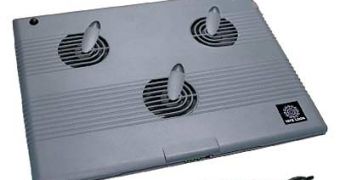Every year, laptop manufacturers come up with a more performant laptop or notebook. The newer are the more powerful, slimmer and lighter. The end result is that users have more and more computing power to play with (power comparable to that of a desktop system, only operating in a very small space) and more and more heat to dispose of. Laptops and notebooks are cooled by an air flow as cool air is pulled in through sides or the bottom of the case and then it is pushed out in the back. Many users keep their laptops or notebooks on their laps (hence the name), on a blanket or a cushion, potentially blocking the cooling vents and causing the temperature to rise.
The temperature issue can be addressed from a software point of view too. Newer operating systems demand more and more computing power, so the hardware layer is almost always under full load, generating a lot of heat. On the other hand, almost all new operating systems support advanced power management features, allowing users to save battery time and their laptops to cool down. Even as a laptop is used on a smooth and flat surface as a desk, heat builds up beneath it. While there are a number of commercial solutions available that address this issue, any user can achieve the same general effect with only a little ingenuity and no cost.
The simplest solution is to use a two-rubber erasers and an aluminum ruler. Just mount the erasers on the ruler, then lower your laptop on top of it so that it faces you. Because of a slight angle, the bottom of the laptop is a little more distanced from the desktop, increasing the air flow. A bulkier version of the above, suited for larger laptops, is the camping table made of aluminum , with adjustable legs. Because of the four legs, your laptop will sit at an even level and the air flow will be completely unobstructed. Finally, there is the solution of placing some bottle tops (I like Coca-Cola tops) under each corner. It will help increase the air flow, but not too much, while compromising the laptop's stability.

 14 DAY TRIAL //
14 DAY TRIAL //